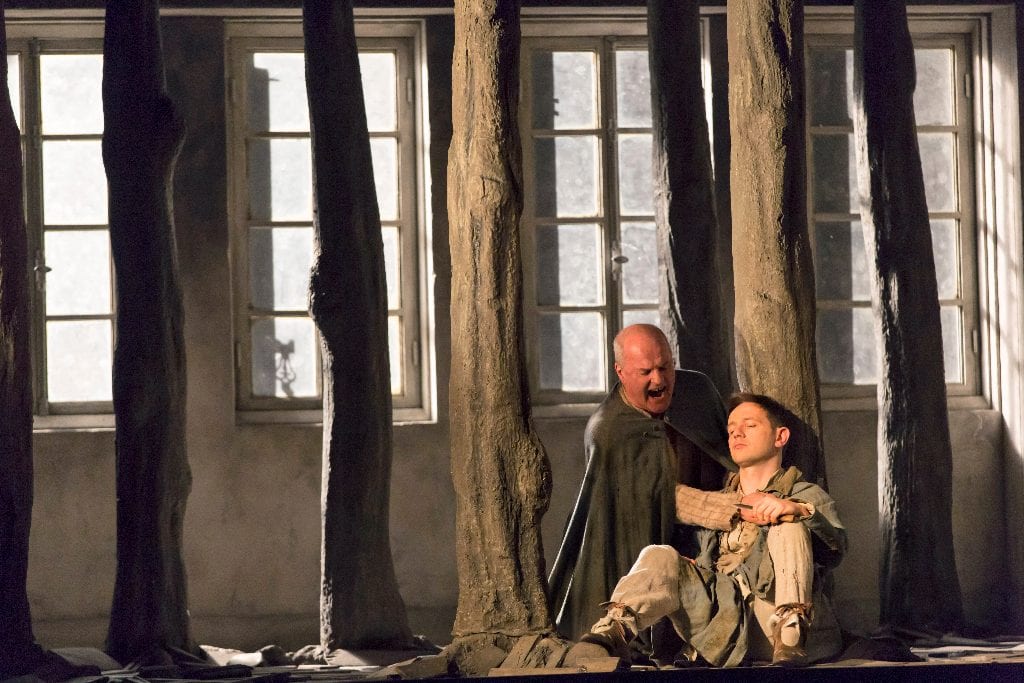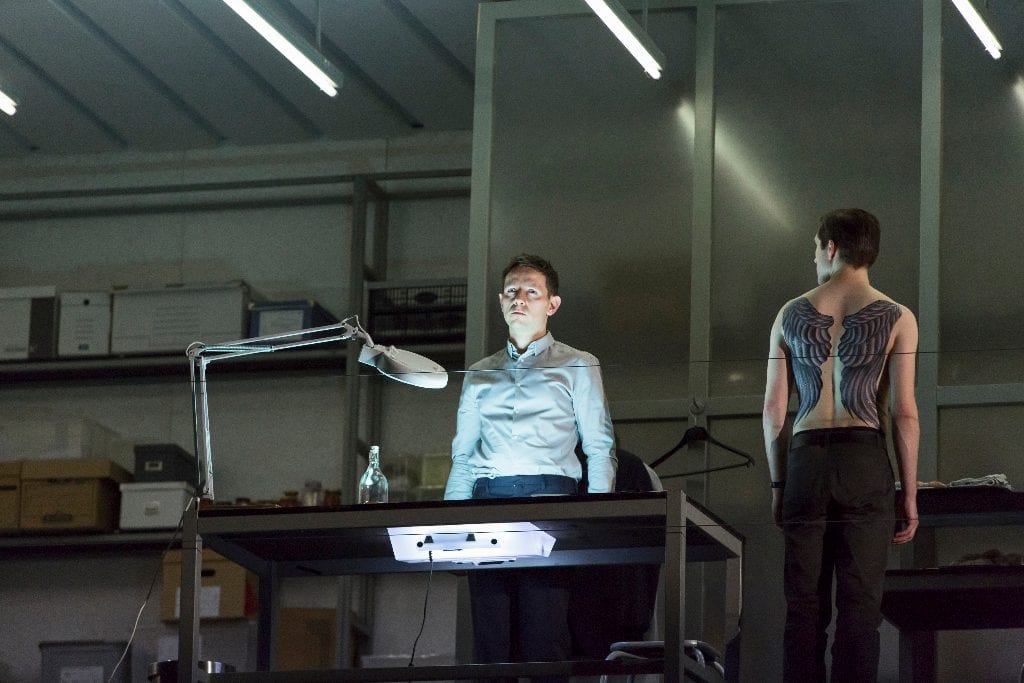Written on Skin is George Benjamin’s second opera and, in this work, the full benefits of his partnership with writer Martin Crimp are revealed. The story is drawn from the troubadour tradition of medieval France but the theme – the violent revenge of a cuckolded husband – is sadly just as relevant in twenty first century Europe, even if today the means of revenge are likely to be different. In this visually striking production both the music and the drama strike home with compelling force.
The ‘protector’ invites the ‘boy’ to join his household and to produce an illuminated book, written on skin, which celebrates his achievements, showing his family in paradise and his enemies in hell. His wife, Agnes, is at first resentful of his presence but, as the book progresses, she finds herself increasingly drawn to the boy and to the beauty of his artistic creation. They become lovers, she feels an increasing compulsion to make sure her husband knows about her passion, and tragedy ensues.
The opera begins with three angels setting the scene for the world in which the drama unfolds, strangely linking modern and medieval times. One of the angels becomes the boy. This is the role sung by the superb Iestyn Davies, whose wonderful counter-tenor voice seems to improve with each role. Although the part does not have the dramatic possibilities that the writer invests in the protector and his wife, his poise and charisma is the fulcrum on which the drama revolves. Barbara Hannigan and Christopher Purves play Agnes and the protector. Barbara Hannigan, who specialises in modern operatic roles, is stunning in the role of Agnes, singing with piercing power and inhabiting the persona of the wife who finds her freedom through her love for the ‘writer on skin’. Christopher Purves similarly lives the role with huge dramatic power. His voice was not at its best and some of the more demanding high passages sounded strained but the transformation from brutal landowner to bewildered cuckold was right on the mark.
The music is not easy on my ears but it is – as Benjamin clearly intends – absolutely fitted to telling this story. But one almost wants to call it an opera by Benjamin and Crimp because the importance of the text is overwhelming here, both in making the story live and in providing the mechanism for distancing the observer. Crimp talks about “holding back emotional expression” and makes subtle use of the device of the actor/narrator, where the singer sometimes has a line about themselves as if speaking in the third person.
Whether Katie Mitchell’s production entirely supports the vision that seems to come from Benjamin and Crimp is a difficult question – the graphic nature of the sexual contacts and of the murder seems at variance with the intentions of the creators of the piece. In the programme notes Crimp says “I endeavoured to keep everything potentially melodramatic about the subject contained” – this was clearly not Mitchell’s intention. It leads to an undeniable powerful dramatic performance but one in which staging and music seem out of kilter.
Vicki Mortimer’s set design is superb with the juxtaposition of modern and medieval worlds shown brilliantly, with box-like compartments of shifting sizes and at two levels linking the two ages as characters move from space to space. However, some of the ‘other-stage’ action does sometimes distract the attention. Benjamin conducts his own work and the ROH orchestra rises to the occasion with style. This is the first revival of a modern opera which really does deserve to be part of the regular repertoire of the Royal Opera.





